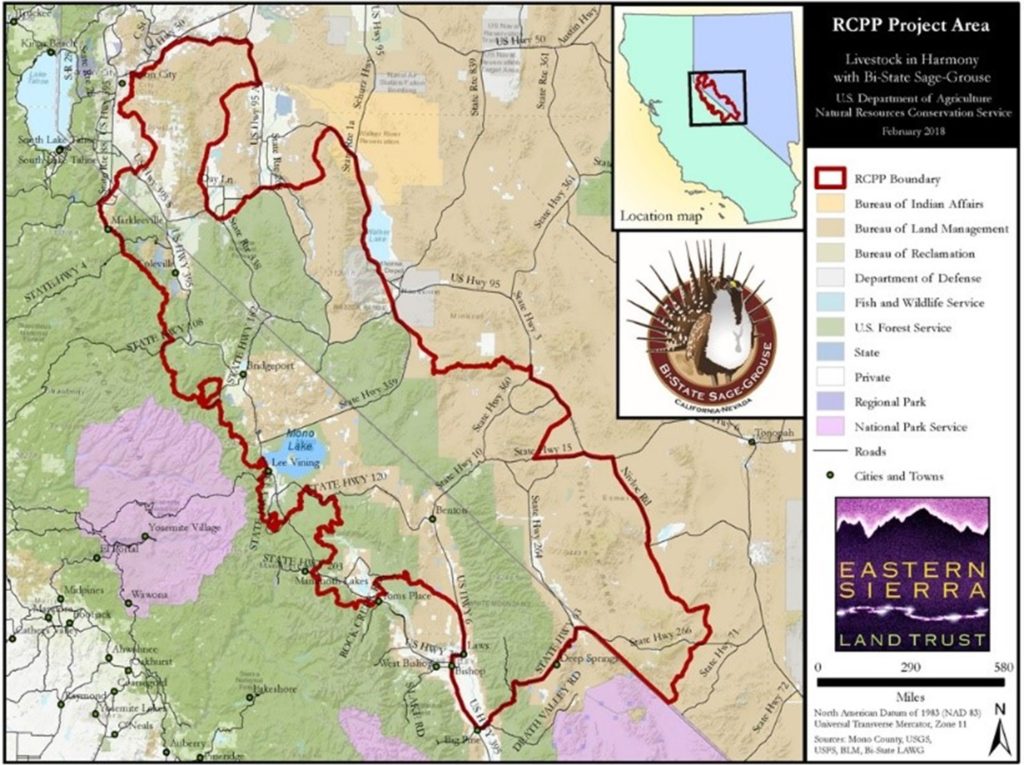One Farm Bill conservation program is a strong model for collaboration among federal, state, and local partners creating better habitat for sage grouse
As most sportsmen and sportswomen know, a major conservation challenge that requires an even larger solution is the plight of the greater sage grouse. The sagebrush steppe ecosystem, which once spanned nearly 500,000 square miles across the Intermountain West, has shrunk by half, due to a variety of issues including invasive species, drought, land conversion, and development. These stressors have each contributed to population declines of over 95 percent and brought sage grouse to the brink of an endangered species listing in 2014.
The issue has been a political football in the years since, marked by court cases and management plan revisions, and all the while, Congress has included an annual rider in its spending bills to prohibit the use of U.S. Fish and Wildlife Service funding for purposes of listing the bird as endangered. Ten Western states have developed sage grouse management plans across 65 million federal acres, but populations continue to struggle.
As any wildlife biologist or land manager can attest, the issues that threaten a species and its associated habitats do not exist in a vacuum—nor do effective solutions. That’s why the careful collaboration and negotiation of conservation measures for sage grouse on public land are not enough.
Fortunately, there are a handful of tools available to private landowners to boost sage grouse habitat. One, the Regional Conservation Partnership Program, was created in the 2014 Farm Bill and has quickly grown into our nation’s premier public-private conservation program addressing resource challenges on a landscape scale. Based on its early popularity, the program was expanded in the 2018 Farm Bill and subsequently authorized at $300 million annually.
One of the success stories that brought Congress to invest in the RCPP in the 2018 bill was an effort underway in California and Nevada to ensure the future of the bi-state population of greater sage grouse. Led by the Eastern Sierra Land Trust, 11 national, state, and local partners have been working to conserve the bird since 2002. In 2017, those groups together leveraged $16 million in partner funds to secure an additional $8 million in RCPP dollars for habitat restoration on the California-Nevada border, an RCPP project known as “Livestock In Harmony.”

In the five years since this RCPP investment was awarded, the locally led partnership has made significant funding and technical assistance available to farmers and ranchers to enroll in agricultural and wetland easements. It has also carried out ecosystem restoration, optimized water use, supported outreach and education, and more.
The project wraps up in June 2022, and we look forward to seeing the progress made on local sage grouse populations as well as the surrounding landscape generally. As improvement projects have done for many bellwether species, restoration of sage grouse habitat will have far-reaching benefits for all sagebrush species.
Of course, implementation of the expanded RCPP hasn’t been without hurdles. The TRCP and our partners—some of whom are involved in project implementation—hear concerns about application timelines and costly requirements for the share of funds not being contributed by the federal government. Especially as lawmakers begin to develop the 2023 Farm Bill, it’s critical that the U.S. Department of Agriculture is able to get authorized funding out the door and onto the landscape now, or risk Congress providing a much smaller sum to the program in the years ahead.
For more information on the RCPP and other Farm Bill conservation programs, visit trcp.org/farmbill.
Top photo courtesy of the USFWS / Tom Koerner via Flickr.





